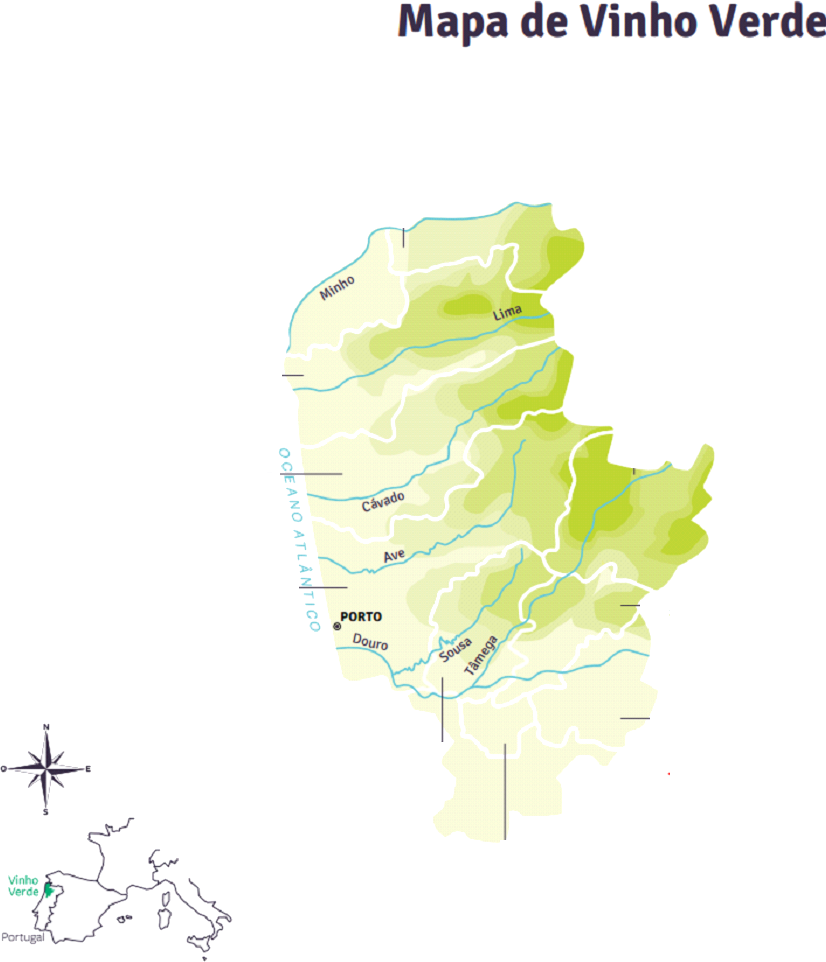Region
The earliest known references to Vinho Verde wine came from the philosopher Romans Seneca, the naturalist Pliny and from Dominican legislation, dating from 96-51 BC. The northwest of Portugal, the most populated heartland since the Middle Ages, saw its dense population spread out across the ridges of a particularly uneven landscape. From the 12th century on, there are a number of references to the cultivation of vines, which was boosted by initiatives of religious bodies as well as the Portuguese Crown. Viticulture remained in its infancy until the 12th and 13th centuries, at which point it became an important part of the customs of the people of the Entre-Douro-e-Minho region. Demographic and economic expansion, increased commercialization of agriculture and the growing circulation of currency meant that wine became an important and indispensable source of income. Although exports were very limited, we know from history that the Vinhos Verdes were the first Portuguese wines to be sent to European markets (England, Flanders and Germany), particularly those from the Monção and Melgaço and Ribeira de Lima regions. At the beginning of the twentieth century, there was a focus on quality and regulating the production and trading of Vinho Verde. The Legal Charter of September 18, 1908 and the Decree of October 1, 1908 demarcated the Vinho Verde Region for the very first time.

Sub Region of Basto
The Basto subregion is found in the most inland part of the Region. Its altitude is high and has protection against the sea winds. The climate is harsher, with a cold and very wet winter and a particularly hot and dry summer, favoring grape varieties that mature late such as Azal (white), Espadeiro and Rabo-de-Anho (red). Apart from the Lima valley, the Basto subregion has the highest rainfall. The Azal grape variety reaches its maximum potential here and allows very special wines to be produced, with a lemon and green apple aroma, and a very crisp flavour. There is also a considerable amount of red Vinho Verde produced.
